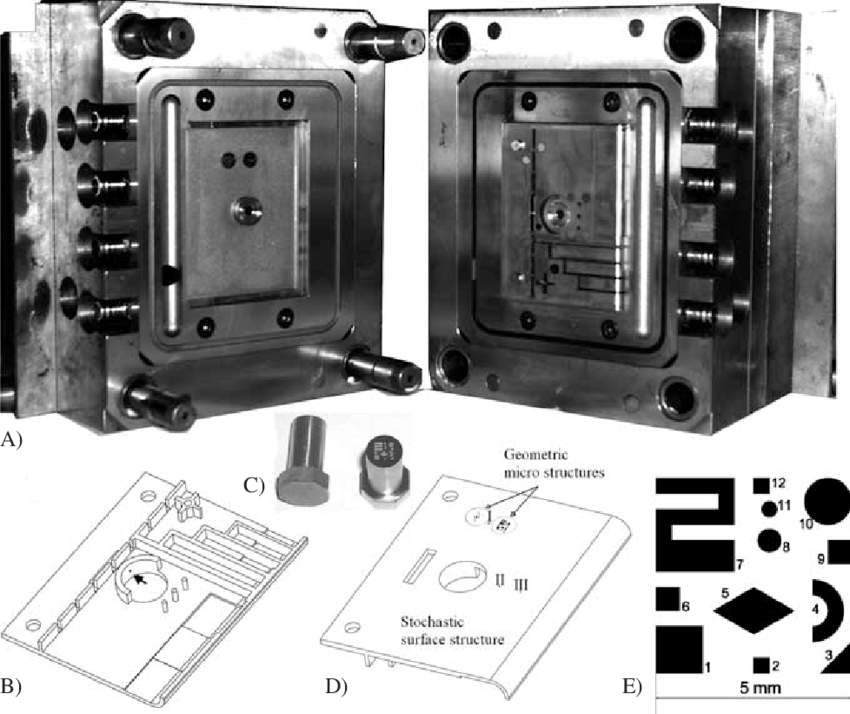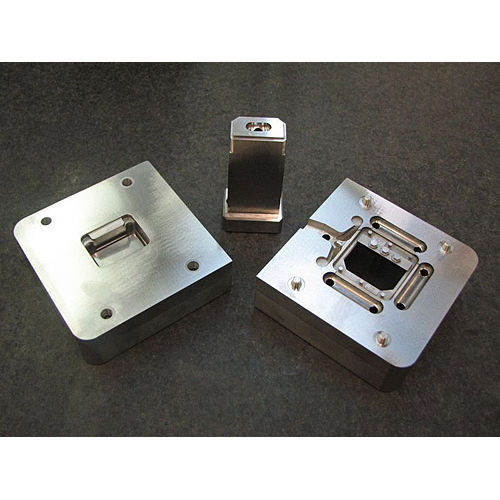History of Insert Mold injection
In the 21st century, the vast majority of our everyday objects are made of plastic. How are these objects designed? We owe our electronic equipment boxes, our toys, and even our glasses to one process in particular: Insert Mold injection molding.
The history behind the Industrialization and Insert Mold injection
Until 1929, the plastics industry was limited to the manufacture of small objects such as knitting needles, brooches, or spectacle frames.
It was in the 1930s, that the history of Insert Mold injection began, with the design of the first injection molds. At the same time, the major German and American chemical laboratories invented the most famous polymers:
- polyvinyl chloride (PVC)
- polyamide 6-6 (PA66, the famous Nylon!)
- Polyethylene (PE)
- polystyrene (PS)
Insert Mold injection: why such a success?
The explosion of Insert Mold injection goes hand in hand with the development of a new industrial sector which has allowed the mass creation of toys, household items, and most of the objects of our daily life.
This technology has many advantages that facilitate the production of many objects.
What are the stages of an Insert Mold injection cycle?
The course of an Insert Mold injection cycle is relatively simple and is done in four steps:
- Introduction of plastic granules
- Heating and mixing of the material
- Material injection
- Cooling and ejection of the plastic part
Let’s discuss them in detail!
Step 1: introduction of the granules
The first step in the Insert Mold injection is to feed plastic granules into a hopper. These granules are easy to make of different materials and thousands of combinations are possible (color, chemical composition, recycled or not, etc.).
Step 2: heating and mixing
The granules are then softened by a combined action of heat and pressure. An endless screw equipped with electric heating collars serves as a metering and heating system for the material.
During this operation, the material changes from solid to liquid.
Step 3: injection of the material
The metered and accumulated material at the end of the sleeve then injects into the mold by a piston movement in the Insert Mold injection.
Step 4: cooling and ejecting the part
A hydraulic or electric plate allows the mold to maintain under pressure during injection. The mold, equipped with cooling channels, then opens when the part is completely solidified. A new cycle can then start again.
Insert Mold injection can be used to manufacture most everyday objects, even if it is not the only process for shaping polymers. It is a simple process suitable for mass production.
| What to do if an important property is not specified in a material file?
In the majority of cases, the material sheets make it possible to answer the main questions of plastics processing companies and their customers. Nevertheless, the most technical specifications sometimes contain unusual requirements (resistance to radiation, ultrasound, etc.). Having the material tested by an expert laboratory is one way to ensure that it is suitable for the intended application. A research and development phase of varying length may also be necessary to validate critical parts. |
How to choose the right industrialization technology?
The choice of manufacturing technology for Insert Mold mainly depends on two factors:
- plastic material which makes it possible to meet the requirements of the specifications;
- economic and industrial criteria;
Which material for which process?
While not all plastic part manufacturing processes are suitable for all materials, some materials such as HDPE and PP are quite versatile, which contributes to their success.
Other subjects, on the other hand, are less so. For example, polycarbonate is a difficult material to work within rotational molding.
Rotational molding and extrusion blow molding are also incompatible with materials that are too liquid, as these processes work by gravity.
| Insert Mold injection is the versatile process par excellence, as it is compatible with any type of polymer material. |
Industrialization criteria
The choice of process for Insert Mold strongly depends on the volume of production you want to obtain.
The three main manufacturing processes thus have different uses:
- injection, for large series
- blowing for medium and large series
- rotational molding, for small series
Some expert advice for choosing your plastic material for Insert Mold
End of life: an essential criterion
Choosing between several plastics is no longer only a technical or economic question; it is also a question of respect for the environment. As environmental issues are crucial, it is now important to think about the end of life of the product you are designing, that is to say about its recyclability and its non-toxicity, in the case of energy recovery.
| Prefer single material products
Some everyday products such as toothbrushes are considered complex to recycle because they are made of several plastic materials that are difficult to separate: brush fiber, handle, flexible parts. To design a product that is easy to recycle, it is, therefore necessary to avoid material mixtures. |
Cost and availability of material
There remains one criterion that we have not mentioned and which is very important for any industrialist: the cost of plastic for Insert Mold. This criterion is however not so easy to evaluate, because the cost of materials fluctuates, due to:
- the price of plastic (Platts indicator);
- the cost of additives used;
| Take into account material availability
To complicate matters, some material references marketed in some countries are not available everywhere. Consequently, it is sometimes necessary to find equivalents, which may require going through a costly and time-consuming certification step. |
What if the only suitable material is too expensive?
In this case, the solution is to check whether the desired property is really essential. If this is not the case, a revision of the specifications may be necessary in order to control costs.
| Prioritize the constraints of the specifications
On paper, it is easy to establish a list of properties that a product must-have. In practice, it is sometimes difficult to match all the requirements, especially if the selling price of the part is to be kept low. It is therefore advisable to prioritize the constraints of the specifications because sometimes certain constraints can be secondary and costly. In this case, a value analysis may be necessary. |
To summarize:
Your plastics engineer is in the best position to choose the right raw material for Insert Mold for your application. Why? Because it masters all stages of the industrialization of your plastic parts, from their development phase to their end of life.







